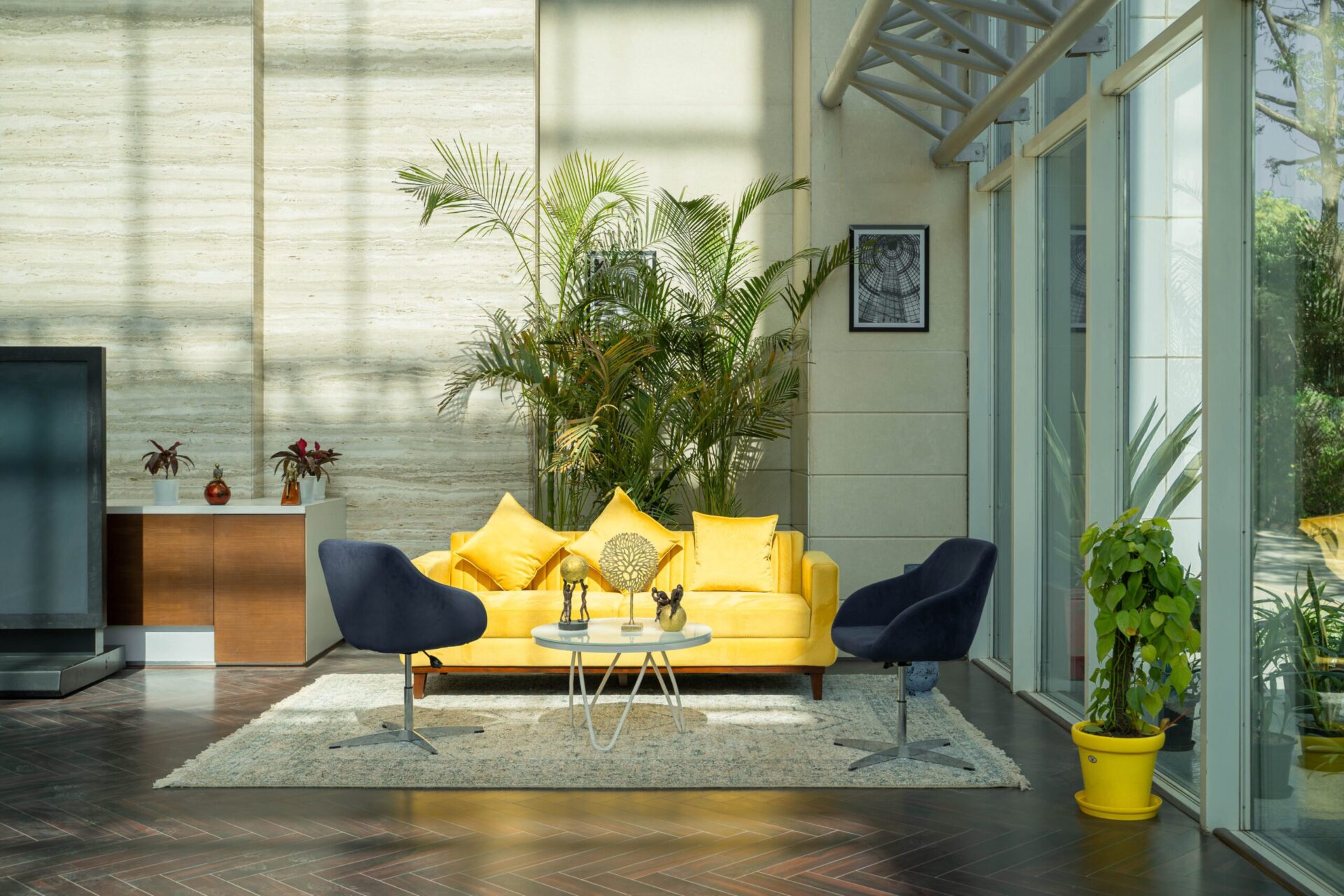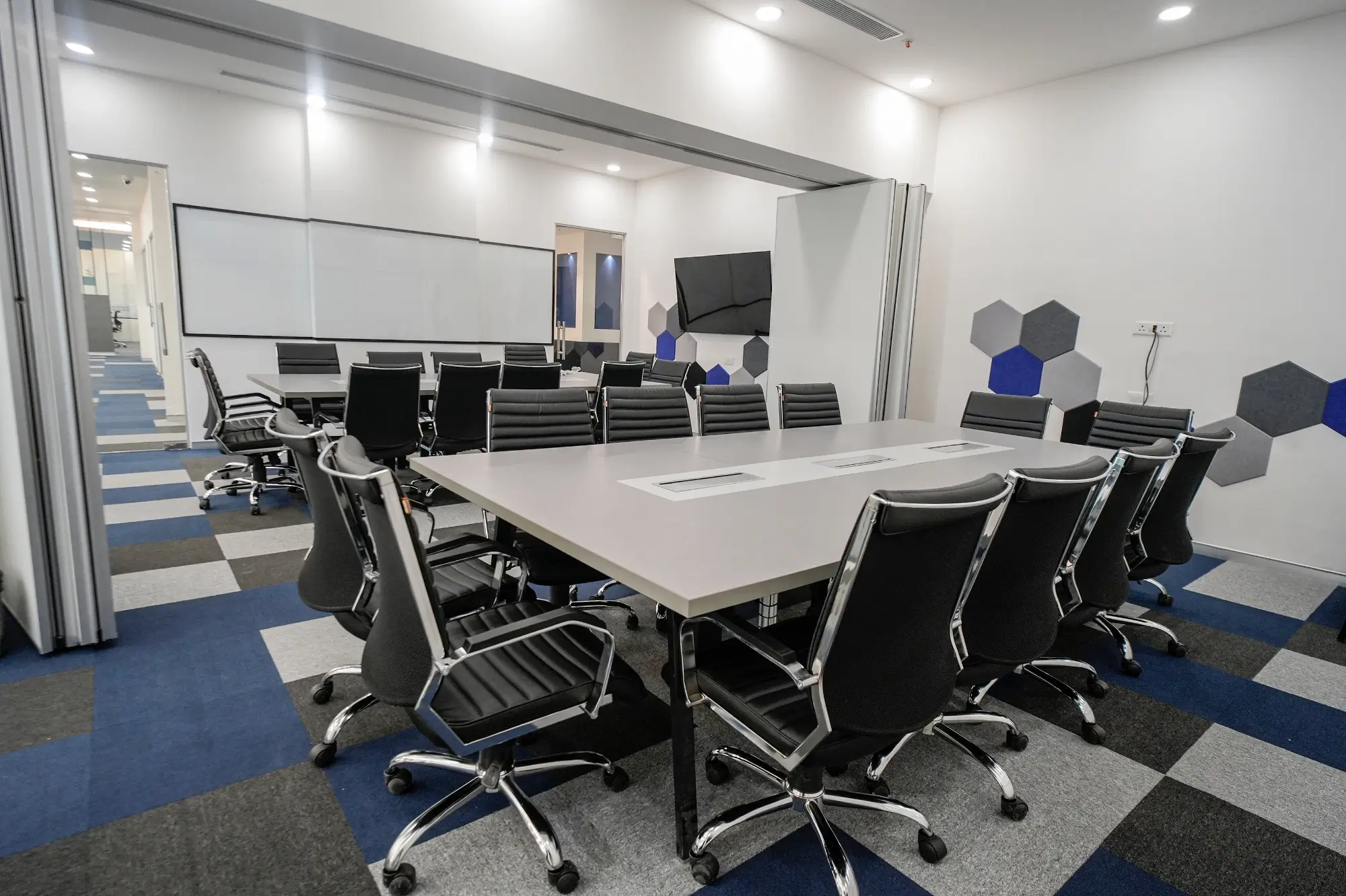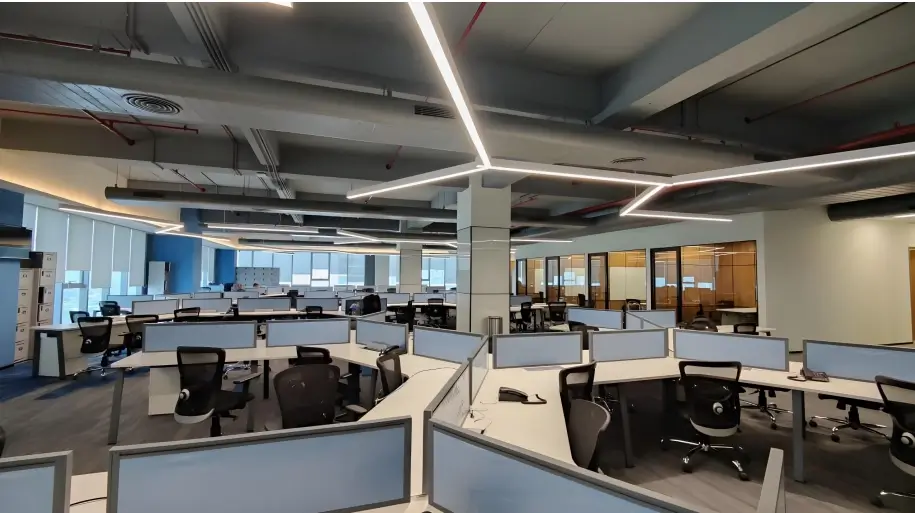Modern interior design for office spaces goes beyond furniture arrangement and color selection. Instead, it includes the overall creation of an inspiring environment for creativity, productivity, and proper representation of a company’s culture for its own benefit. In this fast-paced business world, a current environment is essential not just to appeal to the customers but also to generate an aura of motivation around. The following 10 elements will take you through essentials for setting up a modern office design that will look good but will also spur action in the workplace.

The Importance of Office Environment in Productivity
The Psychology Behind Modern Design
Have you ever walked into an office that just felt right? That’s no coincidence. The design of a workspace plays a critical role in influencing mood, motivation, and overall performance. Modern office designs use open spaces, natural light, and biophilic elements to create environments that reduce stress and boost creativity. When employees feel comfortable and inspired, productivity naturally increases.
Impact on Employee Wellbeing
An office well designed not only gratifies the eye but also promotes mental and physical well-being. Ergonomic furniture and flexible workspaces with relaxation areas may help reduce physical strain and mental fatigue massively. Research backs up the idea that when employees are given environments that accommodate efficiency and comfort, the end result is greater job satisfaction, better performance, and lower turnover rates.
Essential Idea 1: Open Space Layouts
Advantages of Open Offices
One of the most talked-about trends in modern office design is the open space layout. Open offices remove unnecessary barriers and encourage spontaneous interactions. This setup not only breaks down the silos that can hinder teamwork but also creates a dynamic atmosphere where ideas flow freely.
Enhancing Collaboration
In an open space, collaboration becomes second nature. When employees share a common area, the flow of communication is more natural and ideas are exchanged more freely. This design choice can lead to increased innovation and a sense of community, making the workplace more engaging and enjoyable for everyone involved.
Essential Idea 2: Flexible Workspaces
Creating Multifunctional Areas
Flexibility is key in modern office design. A workspace that can quickly adapt to different needs—whether it’s a brainstorming session, a casual meeting, or focused work—empowers employees to perform at their best. Designing multifunctional areas means planning for spaces that can serve multiple purposes without compromising on comfort or style.
Adaptive Furniture Solutions
Investing in adaptive furniture is essential. Think adjustable desks, modular seating, and movable partitions that allow teams to reconfigure spaces based on the task at hand. This not only optimizes space but also caters to the varying needs of different projects and workstyles. With the right furniture, your office can evolve as quickly as your business does.
Essential Idea 3: Incorporating Natural Light
Benefits of Daylight
Nothing beats the natural boost you get from sunlight. Incorporating ample natural light into your office design can significantly improve mood and energy levels. Natural light helps regulate sleep cycles and increases overall wellbeing, leading to happier, more productive employees.
Design Techniques to Maximize Light
Designers can maximize natural light through large windows, skylights, and glass partitions. These features not only bring in more daylight but also create an open, airy feel throughout the office. If natural light is limited, consider using high-quality LED lighting that mimics daylight to maintain that vital connection to nature.
Essential Idea 4: Green Elements and Biophilic Design
Integrating Plants into the Office
Bringing nature into the workspace is more than a design trend—it’s a proven strategy for reducing stress and enhancing creativity. Integrating plants and green walls into your office environment can have a calming effect, improving air quality and creating a more inviting atmosphere.
Health and Environmental Benefits
Biophilic design goes beyond aesthetics. It fosters a connection with nature that can improve employee health and reduce stress levels. Green elements also contribute to a sustainable workplace, aligning with the growing corporate responsibility toward environmental stewardship. For more on eco-friendly design practices, check out this insightful article on sustainable office design.
Essential Idea 5: Modern Color Palettes and Materials
Trending Colors in Modern Offices
Color plays a huge role in setting the tone of your office environment. Modern designs often lean towards neutral bases accented with pops of vibrant colors. Soft grays, warm whites, and earthy tones are popular choices that provide a calming backdrop, while bold hues energize key areas.
Innovative Materials and Textures
Innovative materials like reclaimed wood, polished concrete, and glass are making their way into contemporary offices. These materials not only offer a sleek, modern look but also add texture and depth to the design. Experiment with contrasts—smooth surfaces paired with rough, natural textures can create an inviting and balanced space.
Essential Idea 6: Technology Integration
Smart Office Solutions
In today’s digital age, integrating technology into your office design is no longer optional—it’s essential. Smart office solutions such as automated lighting, climate control, and booking systems for meeting rooms make the workplace more efficient and user-friendly. The right technology can streamline daily operations, allowing employees to focus on what matters most.
Future-Proofing Your Workspace
Future-proofing your office means anticipating technological advancements and designing a flexible infrastructure that can evolve over time. Investing in robust IT infrastructure and adaptable systems ensures that your office remains cutting-edge, even as technology continues to advance. This forward-thinking approach not only benefits your current operations but also positions your company for long-term success.
Essential Idea 7: Ergonomic Furniture and Design
Importance of Ergonomics
Ergonomics is at the heart of any modern office design. Ergonomic furniture is designed to support the body and reduce strain during long hours of work. When employees are comfortable, their focus and productivity soar. From adjustable chairs to sit-stand desks, every piece of furniture should contribute to a healthier work environment.
Selecting the Right Furniture
Choosing the right furniture involves more than just style—it’s about function. Look for pieces that offer customization and adjustability to accommodate different body types and work habits. Ergonomic design not only improves physical wellbeing but also signals to your team that their health and comfort are a priority.
Essential Idea 8: Branding and Identity
Incorporating Company Culture
A modern office should tell the story of the company that inhabits it. Incorporating elements of your brand’s identity into the design—such as company colors, logos, and mission statements—can foster a sense of belonging and pride among employees. This personalized approach makes the workspace feel more like home and less like a generic office.
Personalized Touches
Beyond logos and colors, personalized touches like art installations, custom furniture, and themed meeting rooms can reinforce your company culture. These elements create a unique atmosphere that resonates with both employees and visitors. For ideas on blending functionality with style, explore modern office trends.
Essential Idea 9: Sustainable Design Practices
Eco-friendly Materials
Sustainability is a major focus in modern office design. Using eco-friendly materials, such as recycled plastics, bamboo, and low-VOC paints, contributes to a healthier environment and reduces your office’s carbon footprint. Sustainable design is not just a trend; it’s a commitment to future generations.
Long-Term Benefits
The long-term benefits of sustainable design include lower energy costs, a healthier workplace, and an enhanced corporate reputation. Companies that prioritize sustainability are often seen as forward-thinking and socially responsible. This can improve employee morale and even attract eco-conscious talent. Discover more about sustainable practices on Green Building Advisor.
Essential Idea 10: Creative Breakout Spaces
Areas for Relaxation
Breakout spaces are essential for fostering creativity and reducing stress. These areas are designed for informal meetings, relaxation, or simply taking a break from the standard work environment. Think cozy nooks, vibrant lounges, or even outdoor seating areas that provide a breath of fresh air.
Inspiring Creativity
A well-designed breakout area can spark creativity and innovation. These spaces allow employees to step away from their desks and recharge, often leading to fresh ideas and new perspectives. Incorporating comfortable seating, interactive elements, and even art can turn a simple break into an inspiring moment. Check out this guide on creative office spaces for more inspiration.
Final Thoughts on Modern Office Design
Modern office interior design is an evolving field that mirrors the changing dynamics of the modern workforce. It’s about blending functionality with aesthetics, creating environments that are both inspiring and efficient. By incorporating open spaces, flexible layouts, natural light, biophilic elements, and smart technology, businesses can create a workplace that not only supports productivity but also enhances employee wellbeing.
Designing an office is like painting a masterpiece—the right strokes in the right places make all the difference. When you invest in a thoughtfully designed office space, you’re not just creating a place to work; you’re crafting an environment that reflects your brand’s identity and values. For more tailored office design solutions and innovative ideas, explore the services at Expert Office Interior Design & Fit-Out Services

Conclusion
Modern office interior design is more than a visual upgrade—it’s a strategic investment in the future of your business. By embracing open layouts, flexible workspaces, natural light, green design, smart technology, ergonomic furniture, and sustainable practices, you can create a dynamic, inspiring workplace that truly stands out. The thoughtful integration of these 10 essentials not only elevates the aesthetic of your office but also promotes a culture of innovation and wellbeing. With the right balance of form and function, your office can become a powerful catalyst for productivity, creativity, and long-term success.
FAQs
Blues and greens often calm the mind and aid concentration, especially in desk-centric work zones
Acoustic panels, textured dividers, and strategic placement of fabric-wrapped walls can help reduce sound
Eco-friendly paints and reclaimed wood may have higher upfront costs but often yield long-term savings and align with corporate sustainability goals
Restrict vibrant shades to accent walls or small sections, balancing them with neutrals to maintain sophistication
Focus on lighter color schemes, reflective surfaces, and layered lighting to prevent a dull atmosphere

